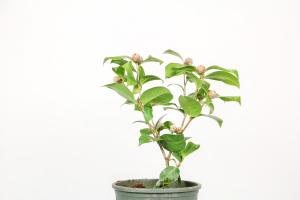Introduction
Climate change is a phenomenon that has a great impact on the environment and ecosystems all over the world. Global warming, changes in precipitation, and extreme weather events are all effects of climate change that have been well documented. One of the most vulnerable elements in the environment impacted by climate change is the local plant and tree species. This article will explore how climate change affects local plants and trees, and its potential consequences.
Effect on plant and tree physiology
Plants and trees respond to various environmental factors, including temperature, precipitation, and carbon dioxide concentration. The average temperature of the planet has already risen by 1℃, and it is estimated to increase by 2℃ by the end of the century. This increase can lead to changes in plant and tree physiology, including early flowering, early leaf development, and changes in the plant's carbon balance. As the temperature warms up, the leaf's photosynthetic rate can increase, but the plant may also increase its respiration rate, leading to reduced growth and yield.
Shifts in plant and tree distribution
Climate change can also affect species distribution and range. As the temperature increases, plants and trees can grow in areas that were previously unsuitable. Conversely, plants and trees that cannot tolerate warmer temperatures can die in those areas, leading to a decrease in their original range. These changes in distribution can have a dramatic impact on the ecosystem, changing the composition of plant communities and potentially damaging interactions between plants and animals that depend on them.
Changes in plant and tree phenology
Phenology refers to the seasonal timing of plant and tree events, such as flowering and fruiting. Climate change can cause changes in phenology, such as the earlier occurrence of these events. For some species, this shift can be beneficial and lead to increased growth and reproduction. However, for others, it can cause mismatches in pollination and seed dispersal, which can have detrimental effects on populations.
Impact on plant and tree diseases and pests
Changes in temperature and precipitation can also affect the incidence and severity of plant and tree diseases and pests. Warmer temperatures can lead to an increase in the number of pests and diseases, leading to losses in agricultural production and ecosystem health. Additionally, changes in precipitation patterns can lead to increased plant stress and susceptibility to infection.
Conclusions
Climate change is a significant challenge that affects the entire planet, and local plants and trees are no exception. The impact of climate change on plant and tree species can have far-reaching consequences, changing the distribution of species, altering phenology, and increasing susceptibility to pests and diseases. It is essential to understand these impacts to develop effective strategies for mitigating and preventing further damage to ecosystems and agriculture.

 how many times do yo...
how many times do yo... how many planted tre...
how many planted tre... how many pine trees ...
how many pine trees ... how many pecan trees...
how many pecan trees... how many plants comp...
how many plants comp... how many plants can ...
how many plants can ... how many plants and ...
how many plants and ... how many pepper plan...
how many pepper plan...





























